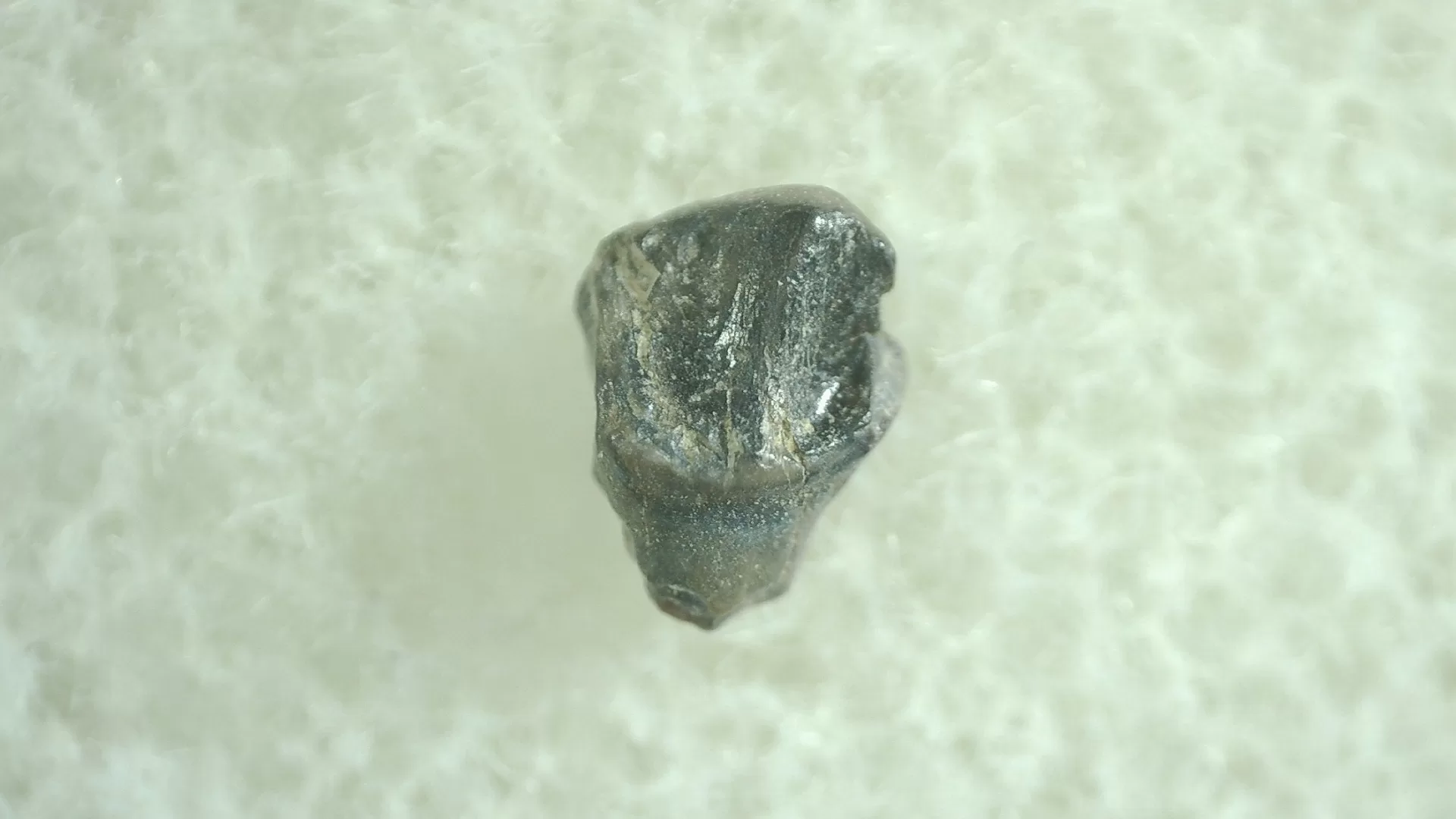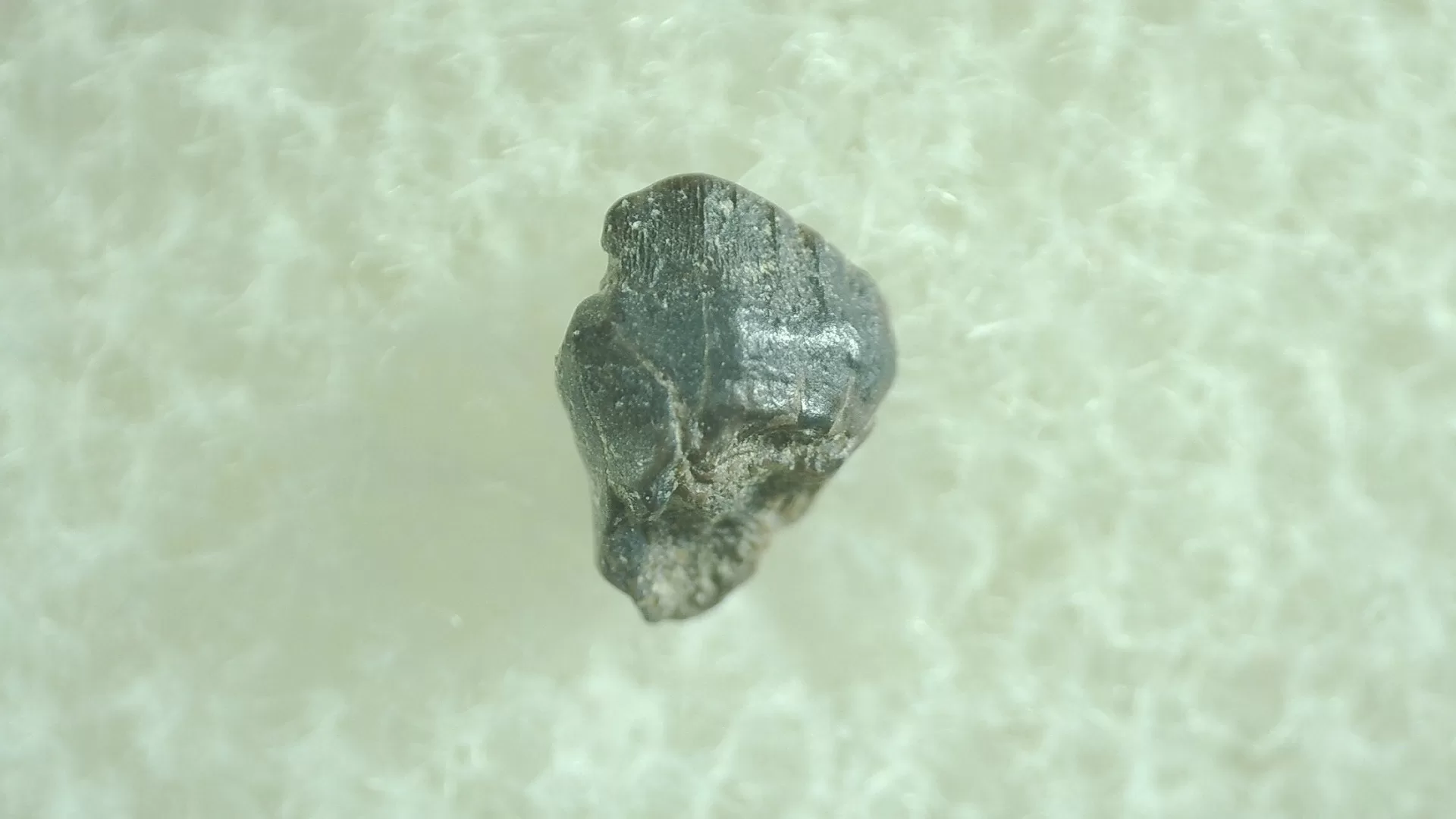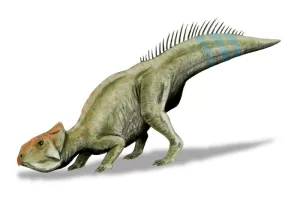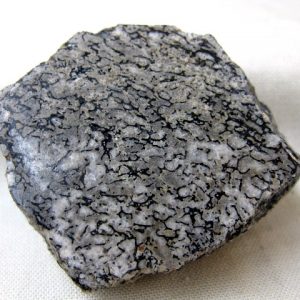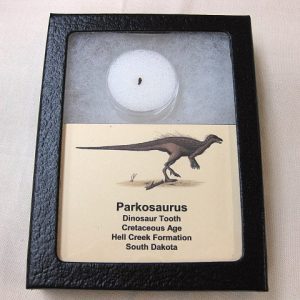Description
Leptoceratops Dinosaur Tooth
- Leptoceratops gracilis
- Lower Cretaceous Age
- Hell Creek Formation
- Powder River County, Montana
- This small tooth comes from a Juvenile animal. The tooth measures .11″ long/wide and will come in an acrylic gem jar. This tooth comes from a group of teeth that had been collected and hoarded by a field collector over a 10 year period.
- More Dinosaur Teeth for Sale
Leptoceratops Dinosaur
WHAT IS A LEPTOCERATOPS?
Leptoceratops belonged to the Ceratopsia, a group of herbivorous dinosaurs with parrot-like beaks that thrived in North America and Asia during the Cretaceous Period. Although traditionally allied with the Protoceratopsidae, it is now placed in its own family, Leptoceratopsidae, along with dinosaurs such as Udanoceratops and Prenoceratops.
HOW BIG WERE THEY AND WHAT DID THEY LOOK LIKE?
All Leptoceratops could probably stand and run on their hind legs. Analysis of forelimb function indicates that even though they could not pronate their hands, they could walk on four legs. Leptoceratops was a relatively small dinosaur, growing to only about 2 meters (6.6 feet) in length. They weighed around 90 kilograms (200 pounds). There are different estimates of its size and weight, with some sources suggesting that it could have grown up to 3-4 meters (9.8-13.1 feet) in length and weighed up to 100 kg (220 lb).
WHAT IS SPECIAL ABOUT THEIR TEETH?
Paleontologist Frank Varriale of Kings College has been taking a close-up–microscopic look at ceratopsian teeth. When Dr. Varriale took a close-up look at Leptoceratops teeth, the scratches left behind by jaw movements were surprising. Rather than the linear scratches typical of many other horned dinosaurs, Leptoceratops teeth were covered in curved scratches. This suggested that the jaws were changing direction mid-bite (technically speaking, during the “power stroke”). If you were to visualize the teeth in side view, they would be moving in little circles against each other, rather than simply up-and-down or back-and-forth.
Leptoceratops wasn’t the only animal with this type of chewing. Dr. Varriale had to look far afield to find other examples. Similar types of tooth wear (and presumably similar types of jaw motions) are found in a handful of small living (some rodents) and extinct (multituberculate and haramiyid) mammals. This dinosaur had independently evolved a chewing style that matched that in those mammals.
WHAT DID THEY EAT?
Like other ceratopsians, Leptoceratops would have been an herbivore. The jaws were relatively short and deep, and the jaw muscles would have inserted over the large parietosquamosal frill, giving Leptoceratops a powerful bite. Given its small size and quadrupedal stance, Leptoceratops would have been a low feeder. Flowering plants, also known as angiosperms, were the most diverse plants of the day, although ferns, cycads and conifers may still have been more common in terms of numbers. A 2016 study revealed that Leptoceratops was able to chew its food much like several groups of mammals, which meant that it had a diet that consisted of tough, fibrous plant material.

